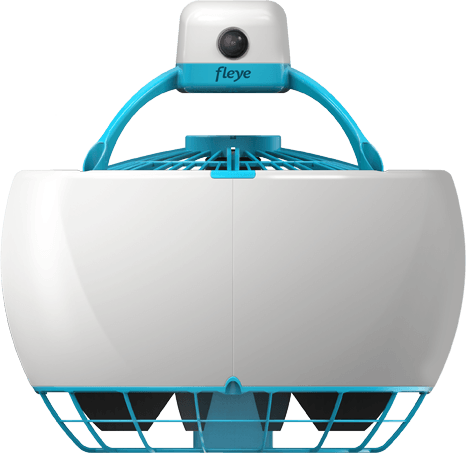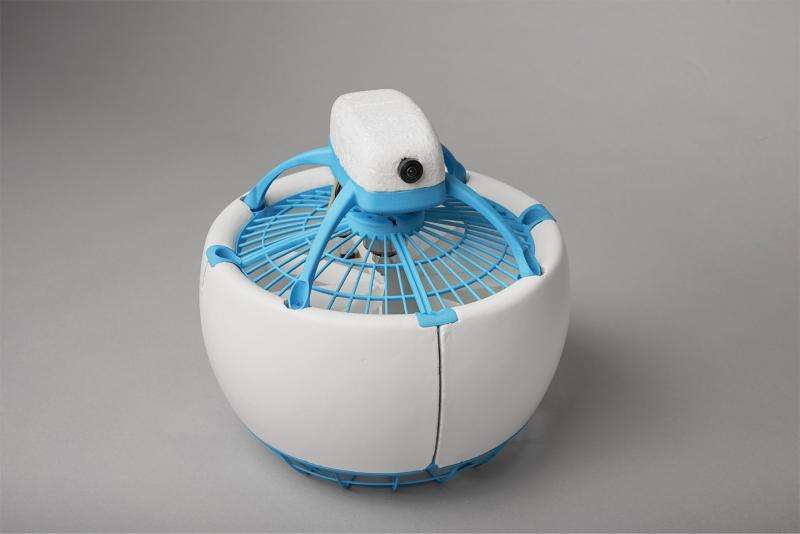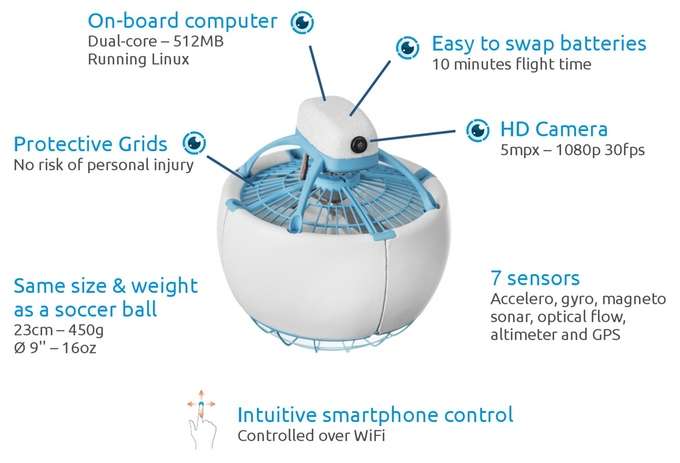Hobbyists can give their Saturday afternoon drones a rest. Why must fun be in the form of military-looking insects? What about a design-friendly ball floating in the air?
A "personal flying robot" is on show on Kickstarter. What is more, the message for developers is that it's no simple toy, said its creators, but rather a platform where you can invent the future of flying robots, thanks to its open APIs and SDK.
A Liege-based team is behind the Fleye flying robot. Fleye co-founder Laurent Eschenauer told the story of the device. He said being naturally passionate about new technologies, he liked the drone concept when first meeting up with drones.
He was convinced he and team could come up with safe, reliable flying robots around us helping us in our daily lives—they were concerned to make something with safety as well as usability. Not satisfied with current drone design, he said, they went back to the drawing board. They invented a spherical flying machine, autonomous, robust, offering "great user experience."
"We had been hacking around in my attic for around a year," said Eschenauer, building prototypes out of wood and DYI electronics. "After many tryouts we saw Fleye was possible."
Tech startup accelerator The Faktory founder Pierre L'Hoest said that in seeing Fleye for the first time, he immediately understood "it was not a drone." He said it was more, like a drawing "becoming real in front of you."
A viewer said it looked amazing because it did not seem mechanical. It has a more unique spherical design, where all moving parts are fully shielded. The creators said it had the same size and weight as a soccer ball.
It has a single-shielded propeller and four control vanes for stability. It's packed with seven sensors and dual-core on-board computer running Linux (it supports OpenCV), HD camera and Wi-fi connection.
The smartphone app has both iOS/Android support.
Battery life? According to Tom's Guide, "The Fleye should offer 10 minutes of flying time with a maximum speed of 10 miles per hour, thanks to the 1500-mAh battery."
A FAQ item on the campaign page asks, what happens if the flyer runs out of battery while flying? They said, "No worries. You will be warned when the battery level gets low so you have time to get home. In the case you can't make it and the battery gets really low, then Fleye will safely land."
They said that charging a battery should take about an hour using the bundled charger. You can also use a high-power RC battery charger and charge in less than 20 minutes but this can have an impact on battery lifetime, they added. "Also note that you can easily swap batteries and you can buy them in any hobby store. Our batteries are standard 3S Lipo 1500mAh with an XT60 connector."
The next step is to move to mass production. They have a shipping goal of September. A pledge of about $742 is for a Fleye with battery and charger included.
More information: gofleye.com/
© 2015 Tech Xplore


























